Knock, Knock…
Door knockers are more popular in England than in any other country and can be found everywhere, even in the most remote locations.
Door knockers have a bit of a dark past, with the earliest thought to originate from Ancient Greece where slaves were chained to a heavy ring attached to the door by a plate in order to greet any guests. In the event the slave had fallen asleep, the guest would tap the knocker to raise the attention of the slave or the homeowner.
The Romans continued with the use of the knocker and it spread across the empire, and so the heavy knocker remained as a means for visitors to announce their presence until around the 15th century.
Until the 16th century door knockers were generally fairly plain, but as blacksmiths developed their skills wealthy people began to have more detailed designs, often relating to local patterns and traditions.
Until the end of the 18th century, door furniture would have been made of iron or wood or, if extremely grand, bronze. Doors were either barred and bolted from the inside or fitted with box or rim locks fixed to the inside of the door which opened with large unwieldy keys; however these were extremely easy to pick. Two inventors solved this problem: Joseph Bramah patented a mortice lock in 1784, followed by Jeremiah Chubb in 1818, both producing improved and more impenetrable locks using smaller keys.
One of the first UK foundries was Kenricks in West Bromwich. Founded in the 1760s, the family firm exported everyday cast iron goods such as kitchenware worldwide. They also produced a range of ornate items for the home and garden reflecting the fashions of the time including door furniture.
At the beginning of the Georgian period door knockers were generally still simple, cast iron and painted black, but during the 1800s as they became more widely used, so it became fashionable to have more elaborate door knockers, such as lion’s and sphynx’s heads often cast in brass or bronze.
The later part of the Georgian era saw brass become the main material for door furniture including door knockers. It also was the time when bell pulls came into use (1830s) and the penny post began (1840s), starting the need for letter boxes.
Brass Doctor’s Door Knocker
The Brass Doctor’s door knocker is based on an early Georgian design and was named the ‘doctor’s door knocker’ as it was used to identify the front door of a doctor’s house.
Throughout the Victorian period the door knocker remained (despite some being removed and replaced by the bell pull), often as a show of wealth in elaborate designs and highly polished brass.
Lion Head Door Knockers
As the door knocker became more elaborate over time many designs were inspired by mythology and religion. The lion head door knocker with its mouth gripping the ring became particularly popular in the early 19th century and has remained a favourite. The lion has been used as a symbol of Great Britain and is thought to signify strength, pride, protection and power.
Hand Shaped Door Knockers
Another beautiful door knocker spotted the world over is the hand shaped door knocker. Considered to have originated in Muslim countries and said to symbolise the Hand of Fatima (recognised and used as a sign of protection) it would indicate that a person of Muslim faith lived in the house.
It is also suggested that two types of hand door knocker exist: male and female, both of which would be present on the front door each with its own distinct sound. The visitor would then knock the appropriate knocker according to their gender.
Fish Shaped Door Knockers
Thought to originate from Scottish foundries, knockers with a maritime theme were often seen on the homes of shipping merchants. There are a wide variety of styles of dolphin and mythical fish knockers each with their own meaning, for example a carp is a symbol of good luck and abundance and a fish with a Poseidon fork design depicts power and a mastery of the seas.
Choosing door furniture for your period property
Unfortunately it is quite rare to see a front door with all its original furniture. As the postal service was set up so letter plates were installed, more sophisticated locks were added and as more switched to doorbells, knockers were removed. Today we are fortunate that there are many ways to recapture the grandeur of our doors.
The first place to start is to assess what remains on your door. Are you matching the knocker to existing pieces or starting from scratch? If you are adding to existing pieces, care must be taken to ‘match’ with the existing furniture. Most modern brass is much more yellow than the rich tones of antique brass. It also tends to be lacquered, so will not patina in the same way as older pieces.
Most companies that specialise in period properties should have a range of knockers in the richer brass that are also unlacquered. Have a look up your street: are there any originals left that can give you a clue as to what would have been there? They will not all be identical, but will give some insight and maybe even some inspiration. But if all else fails, a knowledgeable retailer should be able to give you some pointers given the age of house, location and your requirements.
In conclusion, when choosing your door knocker, bear in mind their interesting meanings and historical references and most of all, have fun with it.
Article courtesy of willowandstone.co.uk, sellers of carefully selected ironmongery, much of which is British made using traditional manufacturing processes and quality materials.
Where to buy…
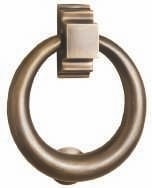
Light antique brass door
knocker, £164.50,
Willow & Stone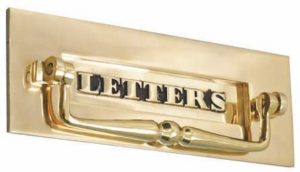
Classic letterplate with clapper, £96.50, willowandstone.co.uk 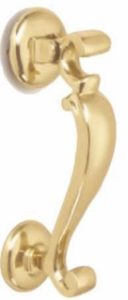
Doctor’s door knocker £133.85, canterbury-brass.co.uk 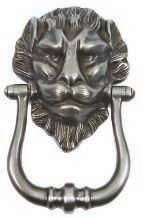
Lion’s Head door knocker, £229, canterbury-brass.co.uk 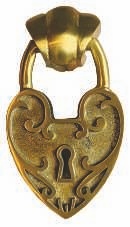
Padlock heart door knocker, £159 gipsyhillhardware.com 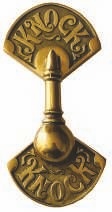
Knock Knock door knocker, £139 gipsyhillhardware.com 
Brass loop door knocker, £48.79, fixingswarehouse.co.uk 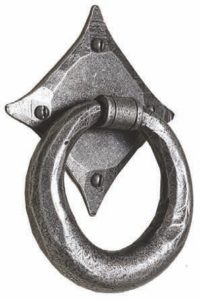
Smithwick ring door knocker, £89.50, Willow & Stone 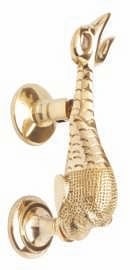
Brass fish door knocker, £45, thedoorknockercompany.co.uk
Posted in: Property






